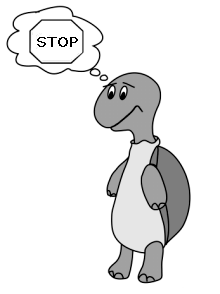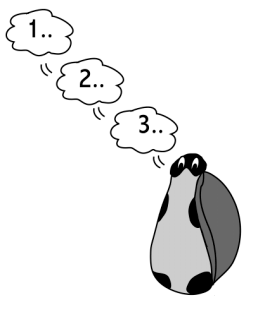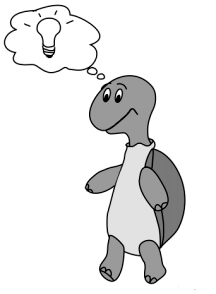Handout 2.6
Social Emotional Teaching Strategies
Helping Young Children Control Anger and Handle Disappointment
Gail E. Joseph, Ph.D. & Phillip S. Strain, Ph.D.
Center on Evidence Based Practices for Early Learning
University of Colorado at Denver
As a result of his teachers’ careful selection of toys, materials, and play themes, 3 year old Eduardo now is able to benefit from his active participation in a full range of free play activities. Yet, it is still the case that without this level of planning and subsequent, ongoing praise, Eduardo would spend most days playing alone with a particular Tonka truck. On this day the truck has been retired from service due to a broken and now dangerous part. Visibly upset, Eduardo begins to whimper as his teacher explains the situation with the truck and promises to get it replaced soon. She offers Eduardo other play ideas and begins to play with other trucks herself encouraging him to join in. The disappointment is too overwhelming, however, and Eduardo just sits passively, shaking his head, No. His teacher next prompts several of his usual play partners to, “Ask Eduardo to help with their building.” When asked, Eduardo screams “No,” stomps over their building project and gets a predicable response from his peers. The teacher intervenes at this point to protect Eduardo, his peers and the ongoing program.
Mattie, a 4 year old in a local Head Start classroom is always the first to organize fun play when the water table comes out each Friday. She often talks with great anticipation and excitement (especially on Thursday) about what she is going to do at the water table with her friends. On this Friday, the water table has been borrowed by the class next door and is not available. When Mattie realizes that the water table is not available she seeks out her teacher for help. She does this with a clear expression of frustration and disappointment. Her teacher explains what happened and asks Mattie to describe how she is feeling. She says she is frustrated. Her teacher acknowledges the legitimacy of her feelings and asks her if she can think of what she and her classmates have practiced when they feel frustrated. With some prompting, Mattie recalls the plan—takes three deep breaths, tell yourself to calm down, and think of some solutions. Mattie and the teacher generate some options at this point, including; a) playing with her next favorite toy; b) asking her best friend what she wants to play; and c) pretending to use the water table. She chooses b, and has a fun freeplay.
As young children gain a better understanding of emotions, they become more capable of emotional regulation. Controlling anger and impulse is perhaps the most difficult task of emotional literacy. In real life situations that are upsetting, disappointing and frustrating it is a tough undertaking to remain calm. Remaining calm in the presence of adverse situations is not about the suppression of emotions, but the dynamic engagement of affective, cognitive and behavioral processes. In order to regulate emotions one must bring into play the rapid and accurate recognition of physiological arousal, the cognitive process required to think, for example, “I need to calm down” and, the behavioral pretense of taking a deep breath and reacting calmly. Children who learn to cope with their emotions constructively not only have an easier time with disappointments, aggravation, and hurt feelings that are so ubiquitous in the lives of preschoolers but they also have an easier time relating to other children and adults at home, in school or child care, and on the playground (National Research Council and Institutes of Medicine, 2000).
On the other hand, young children who have failed to master the early regulatory tasks of learning to manage interpersonal conflict and control aggressive and disruptive impulses are more likely than their self-regulated peers to display early conduct problems. Children with conduct problems and poor impulse control are more likely to be peerrejected and do more poorly in school than children who are more capable at emotional regulation and problem solving (Strain, Kerr, Stagg & Lenkner, 1984). Before children can effectively manage interpersonal conflict, they need to be able to recognize and regulate their own emotional responses and stress level. Teachers can play a significant role in helping children learn to control their anger and impulses and to handle disappointment in appropriate ways by identifying and intervening with children who need extra help in developing these competencies. Some teaching strategies include modeling remaining calm; cognitive behavioral interventions; preparing children for disappointing situations before they occur; recognizing and reinforcing when children remain calm; and involving parents and other care providers.
Model remaining calm
Teachers can model how to manage anger and handle disappointment for young children. For example, a teacher can share with her class how she felt angry when someone hit her car in the parking lot – but then she decided that feeling mad wasn’t helping her think of good solutions – so she took three deep breaths and thought about something relaxing and then when she felt calm she thought of some solutions for fixing her car. In addition to recalling incidents when one felt angry but remained in control – teachers can also model remaining calm as naturally occurring disappointing, scary, frustrating and difficult situations happen throughout the day (e.g., a fire drill; being yelled at; having something break, etc.).
Teach children how to control anger and impulse
While it may be true that children often hear adults telling them to “calm down,” it is very unlikely that this simple direction will result in any changes in children’s affect or behavior. In some instances this kind of command may even escalate a child’s angry response. Cognitive behavioral intervention (CBI) strategies can provide children with the requisite skills to control anger and handle disappointment. CBIs offer strategies for teaching appropriate replacement skills to angry outbursts and aggression. CBIs engage a relationship between internal cognitive events and behavioral change through teaching strategies that guide performance and reduce inappropriate behaviors. Using CBI, teachers can provide young children with strategies to modify their thoughts and promote self-regulation. With preschooler, many accidents occur in classrooms (e.g., children bumping into one another; children knocking over others’ constructions) and some children interpret these accidents as purposeful, hostile acts. An essential ingredient of CBI is to help children reframe and modify their processes in order to substitute more neutral interpretations of others’ behaviors. The “turtle technique” is a CBI strategy that has been used successfully with preschool and kindergarten age children (Greenberg, Kusche & Quamma, 1995;Webster- Stratton & Hammond, 1997).
The turtle technique was originally developed to teach adults anger management skills then was successfully adapted for school age children (Robin, Schneider & Dolnick, 1976; Schenider, 1974). Since then, the turtle technique has been adapted and integrated into social skills programs for preschoolers (PATHS, Dinosaur School). The basic steps of the turtle technique are:
- Recognizing that you feel angry
- Thinking “stop”
- Going into your “shell” and taking three deep breaths and thinking calming, coping thoughts, “It was an accident. I can calm down and think of good solutions. I am a good problem solver.”
- Coming out of your “shell” when calm and think of some solutions to the problem.
Teaching the turtle technique to young children can happen at large and small group times. A turtle puppet is helpful and keeps children engaged during the lesson. The teacher can begin by introducing the turtle to the class. After the children get a chance to say hello and perhaps give a gentle pet, the teacher shares the turtle’s special trick for calming down. The turtle explains a time he got upset in preschool (selecting an incident familiar to the children is best). He demonstrates how he thinks to himself “STOP,” then goes in his shell and takes three deep breaths. After he takes three deep breaths, he thinks to himself “I can be calm and think of some solutions to solve my problem.” When he is calm, he comes out of his shell and is ready to problem solve peacefully. The teacher can then invite the children to practice turtle’s secret. Children can “go in their shells” as a group and together take three deep breaths. Then an individual child can model the “turtle technique” in front of the class. Practice small group activities can include making paper plate turtles with moveable heads and arms that “go in their shell.” Children can then rehearse the steps with the paper plate turtle.
Preparing children to handle disappointment
Teachers can help children by rehearsing some strategies to handle disappointment before a potentially disappointing incident occurs. For example, Elizabeth knows that some children will be disappointed because she can only choose one “helper” to feed the pet goldfish. Before she announces who the helper will be she says to the class, “Remember, I will only be able to select one fish feeder today, and that may make some of you feel disappointed. What can you do if you feel disappointed?” The children together snap their finger and say, “Oh well, maybe next time.” Elizabeth says, “That is right you can say – ‘Maybe next time.’” After she selects the fish feeder, she reinforces the children who remained calm and handled their disappointment. Similarly, a teacher can prepare a single child for a disappointing situation before it occurs. Elizabeth knows that Jordan will be disappointed if someone else is on his favorite swing on the playground. Before they leave for outside, she pulls Jordan aside and says, “When we go outside, someone else might be on your favorite swing. And you might feel disappointed. But, what can you do to stay calm?” She supports Jordan to remember his “turtle technique” and helps him think of some solutions such as asking for a turn, saying please and finding something else to do while the child finishes swinging. For added support, because Jordan may not remember when he is in the moment, Elizabeth gives him a small plastic turtle to hold. The turtle prompts Jordan to keep calm and think of solutions.
 |
 |
Step 1 |
|
 |
 |
Step 3 |
Step 4 |
Posting pictures of the turtle technique (see Box 1 ) can remind children of the steps to calming down. These can be posted in several places around the room. Visual cues can be particularly helpful for very young children, children who are easily distracted, and children with communication delays. Strategically placed, the visual cues can serve as: a) a permanent reminder for children—that is, children don’t have to remember the steps of the process, b) an efficient prop for teachers such that they can simply point to the next step and not disrupt the ongoing class activity with lengthy dialogue, and, c) a clear, concrete way to communicate with children the specific behavioral steps for which they are being reinforced.
Recognize and comment when children remain calm
There are four key features of a reinforcement system that are likely to help strengthen children’s management of frustration and anger. First, it must be recognized that controlling one’s emotions and subsequent behavior is hard work. As such, reinforcement needs to be frequent and powerful. As frequency depends on the occurrence of behavior, teachers need to be equally vigilant about planning as many opportunities for practice as possible. Teachers may also find that their impact is enhanced when they are especially vigilant to “catch those children being good” who may need the most support. A second key feature is to provide naturally occurring, vicarious reinforcement opportunities. For example, the exchanges that adults have with each other can be planned to achieve this aim. For example, Elizabeth might say, “Wow, Steven you really stayed calm when your watch broke. I’m proud of you.”
Third, we recommend that children be provided the opportunities for self-reinforcement.
For example, children can choose among several favorite items and they can forecast at the beginning of the day what they would wish to acquire for managing anger and frustration. Finally, we recommend keeping reinforcers varied and fun. Box 2 outlines some favorite ideas to consider. This system, when implemented with a high degree of fidelity, sends a clear message to young children that handling anger and impulse in constructive and peaceful ways is greatly valued. Box 1. The Turtle Technique The Turtle Technique Step 1 Step 2 Step 3 Step 4
Conclusion
Emotional regulation is fostered not only by the interventions and strategies described in this article, but also by the confidence and security that a warm, responsive relationship with a caregiver provides young children. Trusting relationships allow children to cope with emotions that, initially without even a feeling vocabulary to describe them or strategies to regulate them, can be overwhelming. Moreover this kind of trusting relationship, by definition, means that children will be more attuned, attentive, and responsive as adults model appropriate selfregulation and praise examples that occur throughout the day.
Strategies like the turtle technique and accompanying teaching supports can clearly offer children the cognitive and behavioral repertoire needed to be good managers of their feelings—particularly those occasioned by frustrating and angerprovoking circumstances. However, for children to be truly competent in the regulation of their emotions they often need additional teaching aimed
Turtle Technique Reinforcing ActivitiesSuper Turtle Award: A certificate is given out at the end of the day noting how a child controlled their anger and impulse. “Turtle Power” Necklace: A plastic turtle on a string is awarded to a child who was able to remain clam in an upsetting situation. “Turtle Token Jar”: The teacher has a collection of small plastic turtle counters (or green pom-poms). Every time the teacher catches a child remaining calm and handling disappointment – a turtle token is placed in a clear jar. When the jar is full the class gets to have a turtle celebration. “Turtle Stack”: Teachers have a supply of construction paper, turtle cut-outs. Each time a child is caught remaining calm in an upsetting or disappointing situation, the teacher puts a paper turtle on the wall. This turtle can have the child’s name on it. The next turtle earned is stacked on top of the first, and so on until the criterion is reached. The class then gets to have a turtle party. “Turtle Tote”: The teacher selects a child who has done a remarkable job of controlling anger and impulse and sends them home with a stuffed turtle puppet for the evening. The child can then re-tell how they used the turtle technique to their parents. Box 2: Fun, Reinforcing Activities |
Involving parents
Given that there is great variation in child rearing practices specific to teaching children how to deal with frustration and anger, it is essential for teachers to establish effective home-school collaboration. At a minimum we suggest an ongoing communication system in which a daily report card is sent home that: a) highlights how children have successfully negotiated a frustrating situation and b) suggests ways that family members might further recognize and encourage these accomplishments. An example home report is found in Box 3. In this same spirit of regular communication, teachers may also wish to phone home to report any extraordinary examples of positive child behavior. For many families this can be a most welcome change from the usual events that occasion phone calls from service providers.
For families that are interested in more directed and purposeful intervention in the home, teachers might choose to share a video of themselves modeling strategies, directly teaching a techniques, and reinforcing children for successfully calming down. Moreover, teachers should consider the possibility of arranging opportunities for families to share with each other the ways they have been able to encourage their children’s self-regulation.
at helping them build a strategy for generating solutions or alternative behaviors to troubling events.
Dear Parent: Today Eric did a great job of handling frustration and not getting angry when we ran out of his favorite cookies at snack. Instead of getting upset, Eric took three deep breaths and we talked about other good things to eat. You can help Eric by:
Box 3: Sample letter to parents |
REFERENCES
Greenberg, M. T., Kusche, C. A., Cook, E. T., & Quamma, J. P. (1995). Promoting emotional competence in school-aged children: The effects of the PATHS Curriculum. Development and Psychopathology, 7, 117-136.
Kusche, C. A., & Greenberg, M. T. (1994) The PATHS Curriculum. Seattle: Developmental Research and Programs.
Robin, A., Schneider, M., & Dolnick, M. (1976). The turtle technique: An extended case study of self-control in the classroom. Psychology in the Schools, 13, 449- 453.
Strain, P. S., Kerr, M. M., Stagg, V. & Lenkner, D. (1984). An empirical definition of elementary school adjustment. Behavior Modification, 8, 311-47.
Schneider, M. (1974). Turtle technique in the classroom. Teaching Exceptional Children, 7, 21-24.
Webster-Stratton, C. (1991). The teachers and children videotape series: Dina dinosaur school. Seattle, WA: The Incredible Years.
Webster-Stratton, C., & Hammond, M. (1997). Treating children with early-onset conduct problems: A comparison of child and parent training interventions. Journal of Consulting and Clinical Psychology, 65(1), 93-109.
We welcome your feedback on this Training Module. Please go to the CSEFEL Web site (http://csefel.uiuc.edu) or call us at (217) 333-4123 to offer suggestions.
About Us | Contact Us | Resources | Chat | Primary Partners & CCTAN | Site Map | Search | Home


 GOOD BEHAVIOR REPORT CARD
GOOD BEHAVIOR REPORT CARD

